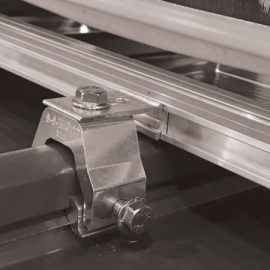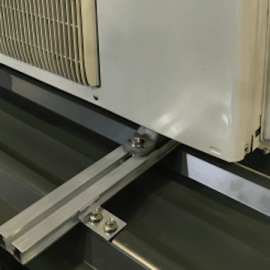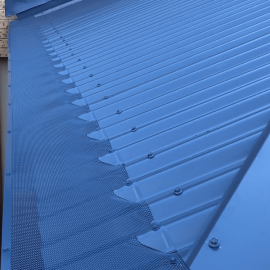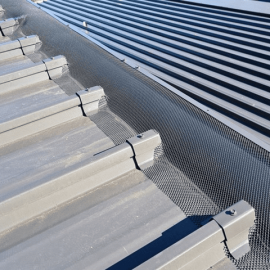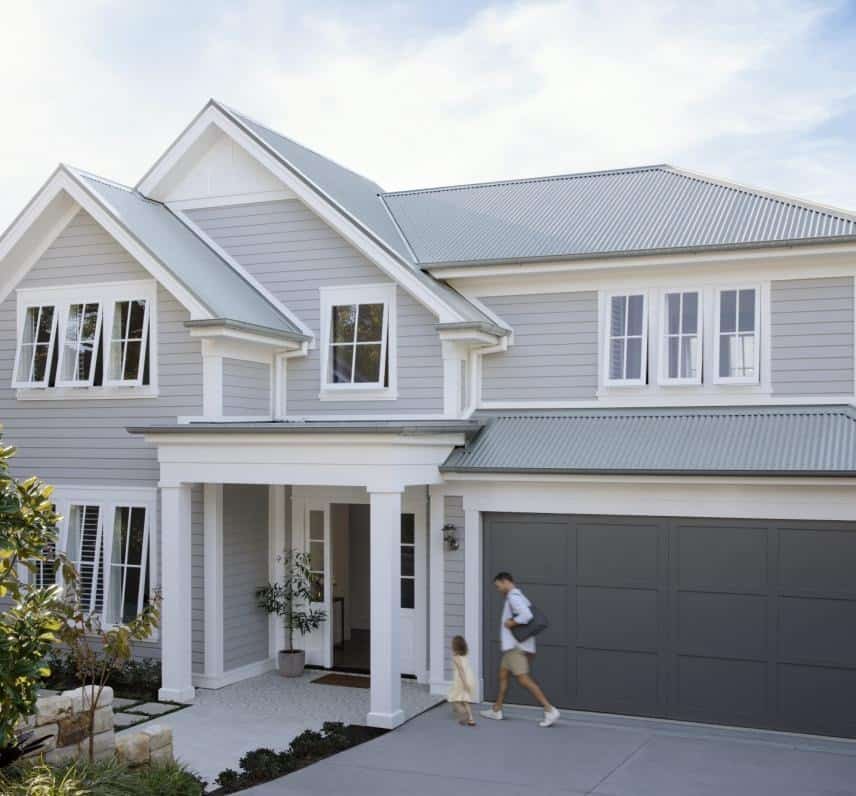
Are you tired of sweltering heat inside your home during the scorching summer months?
Wondering if there's a way to keep your house cool without relying solely on air conditioning? The colour of your roof can have a significant effect on temperature regulation inside your living space.
By choosing the right roof colour, you can harness the power of solar reflection and reduce heat absorption.
But which roof colour is the most effective at reflecting heat?
We'll uncover the answer and explain why it matters for maintaining a comfortable environment in your home.
So let's discover how choosing the right roof colour can make a world of difference in keeping your living areas cool and sustain
Impact of Roof Colour on Home Energy Efficiency
Different roof colours can significantly impact a home's energy consumption. Dark roofs, such as green or red tiles, absorb more heat from the sun, which can increase cooling costs during hot weather.
On the other hand, a lighter coloured roof, like white or light gray tiles, reflect sunlight and reduce the need for air conditioning.
By choosing a roof colour that reflects heat instead of absorbing it, homeowners can create a more energy-efficient living space.
Determining Heat Reflectivity of Roof Coatings
The heat reflectivity of roof coatings plays a crucial role in reducing heat absorption and improving energy efficiency.
Roof coatings with high solar reflectance are designed to bounce back sunlight rather than absorbing it.
This helps to keep the temperature inside the house lower and reduces reliance on air conditioning systems. Measuring the heat reflectivity of different roof coatings is essential to determine their effectiveness in reflecting heat.
Cool roof ratings provide valuable information about the best coating options available in terms of reflecting heat and maximizing energy efficiency.
Energy-Efficient Roofing Options for Various Climates
Choosing an energy-efficient roofing option based on climate can lead to significant savings in both hot and cold regions.
In hot climates, where excessive heat is a concern, materials like metal sheeting offer excellent reflectivity properties to keep homes cooler as these materials have natural reflective qualities that minimize heat absorption.
For colder climates, concrete tiles are a popular choice due to their insulating properties and ability to retain warmth within the house.
In moderate climates where temperatures vary throughout the year, homeowners have more flexibility in choosing roofing materials that balance both heating and cooling needs.
Slate tiles are an excellent option as they provide good insulation during colder months while still offering some reflective properties during hotter seasons.
By understanding which roofing materials work best in specific climates, homeowners can optimize their home's energy efficiency and reduce energy costs.
For example, a study conducted by the Lawrence Berkeley National Laboratory found that using cool roofs in hot climates can reduce energy consumption for air conditioning by up to 20%.
These savings can add up significantly over time.
Best Roof Colours for Hot Climates
Light-coloured roofs are the way to go. .
These roofs have the ability to reflect more sunlight, reducing heat absorption and helping to maintain cooler indoor temperatures.
White and light gray roofs are popular choices as they have high solar reflectance, meaning they reflect a significant amount of solar radiation away from the building.
In addition to their reflective properties, cool roof technologies offer additional benefits in hot climates. These technologies utilize specialized coatings and materials that increase solar reflectance and thermal emittance.
Solar reflectance refers to the ability of a material to reflect sunlight, while thermal emittance is its ability to release absorbed heat.
By combining these two factors, cool roofs can effectively reduce heat transfer into the building, resulting in lower indoor temperatures and decreased cooling costs.
Cool Roof Technology Explained
Cool roof technology is designed specifically to combat heat absorption and maximize energy efficiency.
With the use of reflective materials such as coatings or shingles, cool roofs can significantly reduce the amount of heat that is transferred into a building.
This helps to create a more comfortable environment by minimizing heating effects caused by UV radiation.
The specialized coatings applied on cool roofs have high solar reflectance values, reflecting a large portion of sunlight away from the surface.
These coatings have high thermal emittance values which allow them to efficiently release any absorbed heat back into the atmosphere.
As a result, cool roofs help to keep buildings cooler during hot weather conditions.
Light Coloured Roof vs. Dark Roofs for Heat Reflection
When comparing light-coloured roofs with dark-coloured roofs for their ability to reflect heat, light-coloured roofs come out on top.
Light colours such as white or light gray have higher solar reflectance compared to darker colours like black or dark brown. This means that they absorb less sunlight and therefore, less heat.
In contrast, dark roofs absorb more heat from the sun, leading to increased cooling needs and higher indoor temperatures. This can result in discomfort and higher energy costs for cooling.
By choosing a light-coloured roof, you can minimize heat absorption and maintain a cooler environment inside your home or building.
The colour of our roof plays a crucial role.
The choice of roof colour can determine how much heat is absorbed or reflected, impacting the overall comfort and energy efficiency of our living spaces.
Importance of Roof Colour in Temperature Regulation
Roof colour has a direct impact on the amount of sunlight that is absorbed or reflected by our homes.
Lighter colours, such as white, beige, or pastels, have high reflectivity and are effective at bouncing sunlight away from the roof's surface.
This helps to keep the interiors cooler by preventing excessive heat buildup.
On the other hand, darker colours like black or dark gray absorb more heat from the sun, leading to higher indoor temperatures.
Choosing the Right Roof Colour for Sunlight Reflection
When choosing a roof colour for maximum sunlight reflection, it is important to consider factors such as the sun's angle and intensity in your region.
For areas with intense sunlight throughout the year, lighter shades are recommended as they provide better heat reflection properties.
However, if you live in a colder climate where warmth retention is desired during winter months, darker colours may be more suitable as they absorb heat and help keep interiors cozy.
Concrete, EPDM, and Metal Roofs: Heat Reflection Comparison
Different roofing materials have varying abilities to reflect heat, further influencing the temperature control inside our homes.
Let's compare three popular roofing materials: concrete roof tiles, EPDM (Ethylene Propylene Diene Monomer), and metal roofing.
Concrete roof tiles are known for their durability and low maintenance requirements. They have moderate heat reflection properties, with lighter shades of concrete roof tiles providing better reflectivity.
EPDM roofs, commonly used in flat or low-slope applications, have good resistance to sunlight damage but tend to absorb more heat than concrete or metal roofs.
Metal roofs, particularly those with light-coloured coatings or finishes, offer excellent heat reflection capabilities. They can reflect a significant amount of solar radiation, helping to keep the interior temperatures lower and reducing the strain on cooling systems.
Metal Roofs and Home Efficiency
Metal roofs are an excellent choice. These roofs have reflective surfaces that help reduce cooling costs by reflecting a significant amount of heat.
The reflective properties of metal roofs make them highly effective in keeping homes cool during hot summer months.
By minimizing heat absorption, they can help maintain a comfortable indoor temperature while reducing the load on air conditioning systems.
Colourbond Metal Roof: Cooling Efficiency Enhancement
Colourbond metal roofs take energy efficiency to the next level.
Colourbond metal roofs uses a Solar Reflectance Technology THERMATECH™ which is specially designed to reflect sunlight and reduce heat absorption.
They have a unique coating that enhances their ability to reflect sunlight, making homes cooler and more energy-efficient.
These roofs come in various styles and colours, allowing homeowners to choose a shade that complements their house's appearance.
Made from lightweight steel, Colourbond roofs provide both strength and thermal protection.
The paint system used on these roofs is specifically designed to optimize solar heat reflection, helping to keep the interior of the home cool.
The Role of Cool Roofs in Urban Heat Island Mitigation
Cool roofs play a vital role in mitigating the urban heat island effect.
By reflecting sunlight back into the atmosphere, these roofs help reduce local temperatures and minimize the heat absorbed by buildings.
This can have a significant impact on urban areas, where the concentration of dark surfaces like asphalt and concrete contributes to higher temperatures.
Implementing cool roofs on a large scale can help counteract this effect and create more comfortable living environments.
Addressing Concerns about Condensation and Maintenance with a Light Coloured Roof
One common concern associated with cool roofs is condensation. However, proper insulation and ventilation can prevent condensation issues from occurring.
By ensuring that moisture is properly managed within the building envelope, potential problems can be minimized or eliminated altogether.
Regular inspections and maintenance are also essential for optimal performance of cool roofs. Periodic checks can identify any damage or wear that may compromise their effectiveness in reflecting heat.
Simple measures such as cleaning debris or repairing minor damages can go a long way in maintaining the efficiency of cool roofs over time.
Future-Proofing Homes with the Right Roof Colour Choice
Selecting the best roofing colour to reflect heat is an essential consideration for future-proofing your home.
With climate change and changing weather patterns, it is crucial to choose a roof colour that promotes long-term energy efficiency.
By opting for reflective roof colours, you can adapt to these changes and ensure your home remains comfortable and energy-efficient.
Australia's Progress in Adopting Cool Roofs
Australia is making progress in adopting cool roofs as part of its commitment to energy efficiency.
Homeowners are increasingly recognizing the benefits of cool roofs and embracing this sustainable solution.
By installing cool roofs, Australian homeowners can significantly decrease their reliance on air conditioning during hot summer months.
Studies show that cool roofs can reduce peak electricity demand in residential buildings, contributing to overall energy savings at both individual and community levels.
Cost and Energy Savings with Cool Roofs
Cool roofs offer significant cost savings in terms of energy bills.
By reducing cooling requirements, these roofs lead to lower energy consumption, resulting in long-term energy efficiency. Investing in a cool roof can pay off over time by lowering energy costs and promoting sustainability.
Proper moisture control is crucial during the installation of cool roofs. It is essential to ensure proper insulation and ventilation to prevent moisture-related issues.
Expert installation techniques minimize the risk of moisture damage, ensuring the longevity and performance of the cool roof system.
Energy Savings with Light or Dark Colourbond Roofs
The colour of your roof can have a significant impact on energy savings. Light-coloured Colourbond roofs reflect more sunlight, reducing cooling needs.
This reflective property helps to keep the interior cooler, which can result in lower air conditioning costs during hot summer months.
On the other hand, darker Colourbond roofs absorb heat, leading to increased cooling costs. The absorbed heat transfers into the building's interior, making it harder to maintain comfortable temperatures without excessive use of air conditioning systems.
Choosing a light-coloured Colourbond roof maximizes energy savings by reflecting sunlight away from your home or building.
This reduces the need for artificial cooling methods and lowers overall energy consumption. By selecting a light-coloured roof, you not only save on utility bills but also contribute to environmental sustainability.
It's important to note that while light-coloured roofs generally offer better energy efficiency than dark-coloured ones, there are other factors to consider when choosing a roof colour.
For instance, if you live in a colder climate where heating needs outweigh cooling requirements, a dark-coloured roof may be more beneficial as it absorbs heat from sunlight and helps keep your home warmer.
Well done! Now you know which roof colour is best for keeping your house cool.
By learning about heat reflection and how roof colour affects temperature, you can make your home more energy efficient and comfortable.
When picking a roof, think about how it looks and the good things it can do for a long time.
What is the best roofing colour to reflect heat?
The best colour for your roof to reflect heat is a light or white colour.
A light coloured roof have higher solar reflectance, which means they absorb less heat from the sun and keep your home cooler. Dark colours, on the other hand, absorb more heat and can make your home hotter.
How does roof colour affect temperature control?
Roof colour affects temperature control by influencing how much heat is absorbed or reflected by your roof.
Light-coloured roofs reflect more sunlight and reduce the amount of heat transferred into your home, keeping it cooler. Dark-coloured roofs absorb more heat, making your home warmer.
Are there advanced roofing materials that help with heat reflection?
Yes, there are advanced roofing materials designed specifically for heat reflection.
Some materials have special coatings or pigments that enhance their ability to reflect sunlight and reduce heat absorption. These materials can significantly improve energy efficiency and help keep your home cool.
What are cool roofs and dark roofs?
Cool roofs refer to roofs with light-coloured or reflective surfaces that minimize heat absorption.
They reflect a larger portion of sunlight and keep buildings cooler. In contrast, dark roofs have darker colours that absorb more sunlight and contribute to increased indoor temperatures.
How do I choose the right roof colour for my home?
When choosing a roof colour, consider both aesthetics and functionality. Opt for light or white hues if you live in a hot climate as they provide better heat reflection.
If you reside in a colder region, darker colours may be suitable as they aid in absorbing warmth from the sun.

Solar Absorptance (SA) ranges from 0 (no absorption) to 1 (full absorption), with Solar Reflectance (SR) being its inverse for opaque materials.
The Solar Reflectance Index (SRI) compares roof 'coolness', from a 'hot' black (SRI=0) to a 'cool' white surface (SRI=100).
| COLORBOND® Colour | Solar Absorptance (SA) | Solar Reflectance Index (SRI) |
|---|---|---|
| Dover White™ | 0.28 | 88 |
| Surfmist® | 0.33 | 81 |
| Southerly® | 0.40 | 71 |
| Dune® | 0.48 | 60 |
| Evening Haze® | 0.43 | 67 |
| Bluegum® | 0.57 | 48 |
| Windspray® | 0.60 | 44 |
| Basalt® | 0.67 | 35 |
| Classic Cream™ | 0.33 | 81 |
| Paperbark® | 0.43 | 67 |
| Gully® | 0.64 | 39 |
| Jasper® | 0.67 | 35 |
| Manor Red® | 0.70 | 31 |
| Wallaby® | 0.64 | 39 |
| Woodland Grey® | 0.70 | 31 |
| Pale Eucalypt® | 0.60 | 44 |
| Cottage Green® | 0.73 | 27 |
| Ironstone® | 0.73 | 27 |
| Deep Ocean® | 0.74 | 25 |
| Night Sky® | 0.95 | -1 |
| Monument® | 0.73 | 27 |
Note:
The provided solar absorptance values (SA), representative of new products, have been measured in accordance with ASTM E 903-96, focusing on thermal properties rather than visual impact.
For a detailed understanding, refer to BlueScope Technical Bulletin TB 39 on the thermal performance of roofing materials.
For the full technical explaination of SA & SRI Thermal Ratings - click here



